You glance at your call log and see “(555) — 324” from last night — only a few digits visible. That half-remembered number nags at you. It may be a missed call, a spam message, or a potential reconnect; partial phone number searches can allow you to reduce the list of people who called you with smart search techniques and free information sources.
Can I look up a Partial Phone Number?
Yes, but with limits. Contextual clues, pattern matching, and various search tools can often be used to perform a partial phone number lookup instead of expecting a one-click answer.
Phone fragments, prefixes, or area codes, as well as names or posts, are sometimes indexed in large community databases, social networks, or public directories alongside names or posts. The visible digits can be found by search engines, which are on pages or posts, and special services offer predictive matching in order to give likely full numbers.
Success, however, is determined by the prevalence of the digits, the type of number, public or private, and the data privacy regulations in the country. Unlisted, anonymous, or personal mobile numbers are far more difficult to locate using fragments, whereas landlines and company numbers are simpler to locate.
Why You Might Need a Partial Phone Number Lookup
Partial lookups are useful when you do not have the full digits, to cross-check some suspicious activity, or to assemble a number before attempting other steps of verification.
- Missed call with unreadable number: You may have a missed call where only part of the number is displayed because of display problems, and thus, you need to identify the caller.
- Partially visible number in a message, caller ID, or paper note: A torn note, a cut screenshot, or a half-cut caller ID can only leave you with bits that you have to fill in.
- Detect scam calls: You can use the patterns to help trace repeated scam or spoofed numbers and block them with other people by reporting.
How to do a Partial Phone Number Lookup
Start with broad, privacy-respecting searches and then narrow down. Use search engines, social platforms, directories, and predictive lookup services. Combine area-code filtering, quotation searches, and community-powered tools to increase the odds of matching partial digits to a real number or associated identity.
Google Search with Wildcard or Quotation Marks
Google can dig and retrieve the pages, posts, or directories that have the digits you have. Use quotes around number fragments to compel an identical match and attempt wildcards or variations to match spacing formats. This technique retrieves indexed web pages, forums, classifieds, and cached contact lists where fragments can be located.
How to use –
- Open Google and enter the visible digits inside quotation marks with likely separators.
- Try variants with spaces, dashes, or parentheses to match formatting.
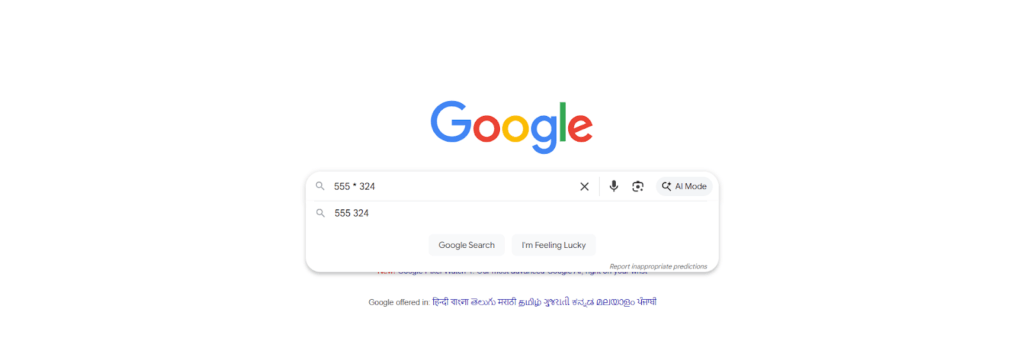
- Add location or business terms to narrow results.
- Review found pages for fuller number context or linked names.
Check Social Media
Individuals and companies tend to post the numbers of their phone numbers on profiles, comments, and advertisements. The social platforms may display a partial or regular fit in which numbers are presented in messages, posts, or reviews.
Search within the Platform
The posts, listings, or profile bios containing phone fragments may be found through searches within Facebook, Instagram, Twitter/X, LinkedIn, and local groups. Enter the visible digits in the search box of each platform, add some city or business names, and narrow down to posts or pages.
You won’t see any private posts; however, on some pages, comments, classifieds, and business pages, you can find full or partial numbers that allow you to reconstruct the rest of the digits.
How to use –
- Log into the social platform and paste the known digits into its search bar.
- Add a city or service keyword to refine results.
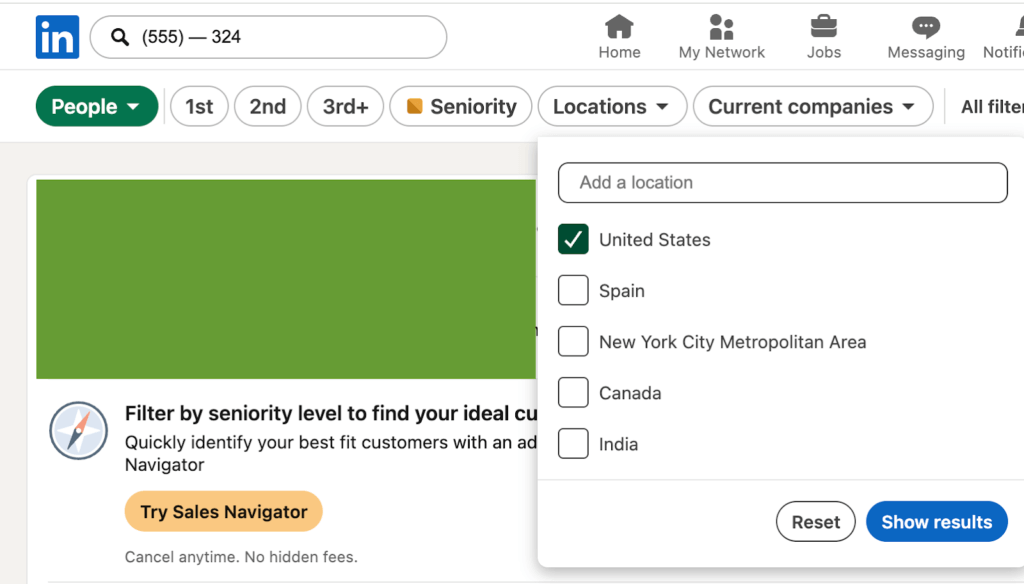
- Scan public posts, pages, and comments for matches.
- Follow linked profiles or listings for additional contact information.
Google Dorking
Google dorking is the method of searching a particular site using advanced operators and filters based on numeric pieces. It will help locate mentions on a high number of pages at once, and is more efficient with a narrowed search to platforms or poorly indexed.
How to use –
- Go to Google and enter the site:socialsite.com and then the quoted numbers.
- Test some of the platform domains and include location keywords.
- Browse back through the pages where the fragment has been posted or mentioned in the profile.
- Record profile names and compare to complete contact information.
With Online Directory — Whitepages
Telephone directories like the Whitepages often list landlines and business numbers and may have an incomplete listing of a match or an adjacent listing that shares a similar endings. Whitepages is a compilation of publicly available records, phonebooks, and directory entries- handy when you have the area or prefix and want to look at nearby.
How to use –
- Visit Whitepages and search the known digits in the phone search box.
- Add area code or city in case results should be narrowed down.
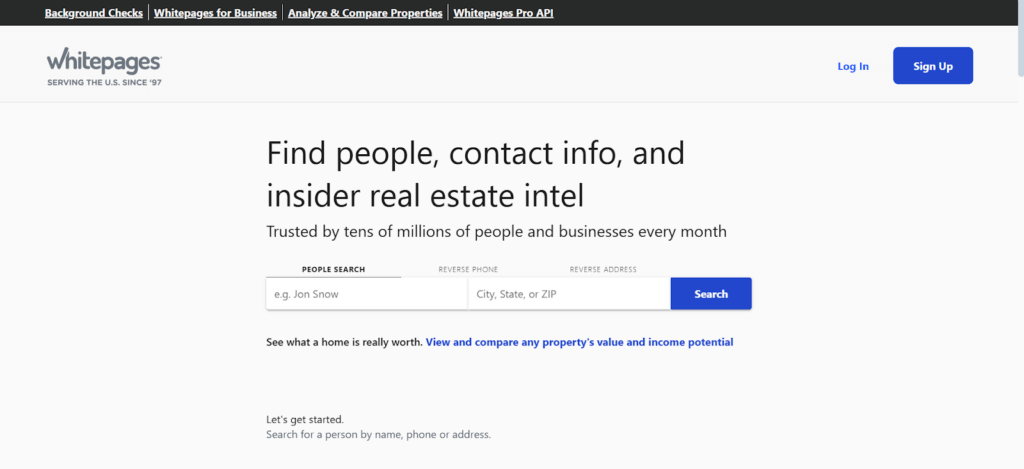
- Examine returned entries for similar or neighboring numbers
- Use address context to infer the full number.
Use Online Phone Number Lookup
Specialized lookup services with large community databases can perform predictive or fuzzy matching on incomplete digits. They may suggest likely full numbers using patterns from user submissions and historical records.
Truecaller
Truecaller runs a huge crowd-sourced database to locate numbers and sometimes supports predictive or fuzzy matching. Truecaller may present likely identities, business names, or recurring patterns when fragments are identified to have numerous community entries, which can be used to reconstruct whole numbers, especially those of a thorny spam or business call.
How to use –
- Open Truecaller and input the digits you know into the search box.
- Sign in if required.
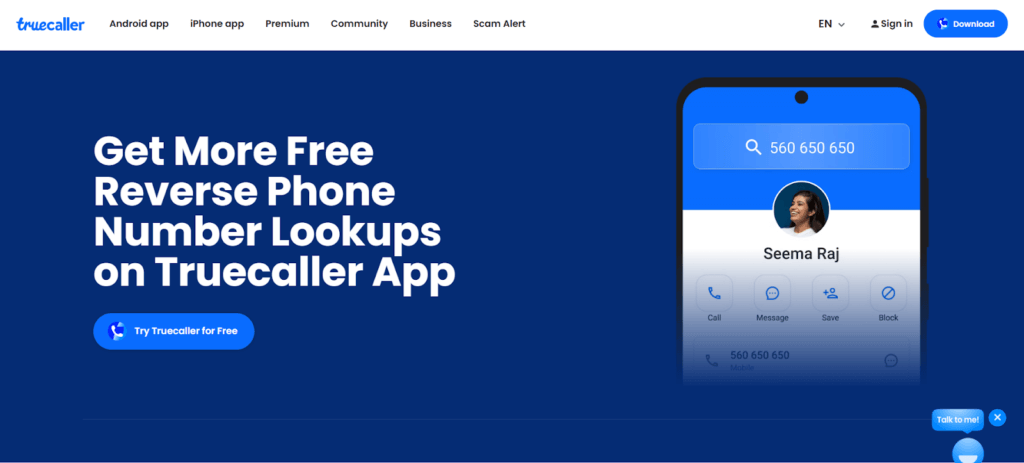
- Check proposed matches and any shown label names.
- Infer the missing digits using a pattern match or repeated hits.
CellphoneLocation
There are global lookup services like Cellphone Location, where it is possible to search by full number, including both landline and mobile numbers. It can find details such as the owner’s name, mobile operator, address, and public profiles. However, it won’t work properly if you only have a partial number. In such cases, the results are often limited to telecom metadata—for example, the carrier, region, or country- but the metadata itself enables you to reduce it to a smaller scope in cases where you only have fragments.
How to use –
- Visit the Cellphone Location lookup page.
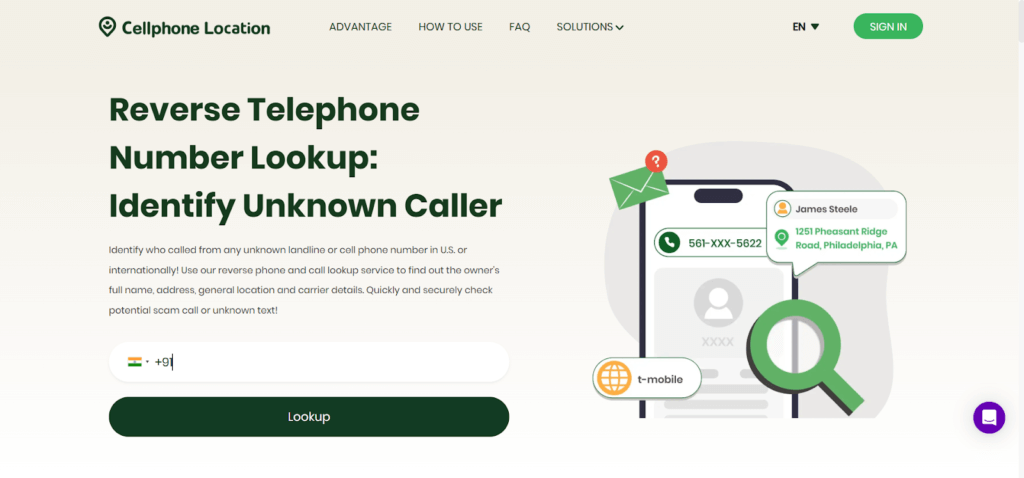
- Enter the visible digits plus area code if available.

- Press search and enter your email address.
- Review returned carrier, country, or region details.
Search by Area Code or Prefix — Allareacodes
When you just know the area code or prefix, then use regional resources to identify all the providers or exchanges associated with that block. Area-code lookup services display the cities and carriers that serve certain prefixes, but they can be used to reduce the number of possible full numbers by eliminating those in which the partial trailing pattern fits.
How to use –
- Launch AllAreaCodes and type in the known area code or prefix.
- Go through the list of cities and carriers that are linked to that block.
Brute Force or Trial and Error
In cases where other methods fail, it can be possible to come up with potential combinations and test them, cautiously and ethically, to produce the entire number. Apply smart sequencing. Call probable local swaps, known carrier blocks or a limited number of missing digits, instead of random full-range dialing. Be respectful of legal limitations.
How to use –
- Make a list of possible digit combinations that are plausible and with more emphasis on local prefixes.
- Contact through text or short calls in a respectful way and avoid repeated calls.
Limitations of Partial Phone Number Search
Partial number lookups are also useful, although they have significant accuracy and privacy issues.
- Low accuracy: There are numerous numbers that are the same in terms of digits or sequence and this results in numerous or incorrect matches.
- Public data is limited: Private and unlisted as well as mobile numbers are not often found in public databases.
- Tool limitations: The majority of the lookup tools require a complete number in order to display the owner identity; the fragments can only indicate carrier or region.
- Global overlap: A single fragment may match thousands of numbers across the globe, further boosting false positives.
- Ethical and legal risks: Brute-force or repeated guessing can be in violation of platform terms or local laws, so always search responsibly.
FAQ
Q: Can I find a person’s name with only 4 digits?
Sometimes. Four digits and context (area code, city, or unique last four) may match in business posts or public posts, but it is often not successful since numerous numbers have the same last four digits. Business or landline numbers have a higher probability of doing so than personal mobile lines.
Q: Can I find a location with a partial number?
Yes, often. Area codes and prefixes are commonly assigned to cities or regions, and lookup services can tell you carrier and regional information on a fragment of a number, allowing you to guess where it is.
Q: How to find someone’s full phone number?
Combine partial digits with local directories, social profiles, business listings, and predictive lookup tools. If appropriate, ask the caller directly, check voicemails or messages for complete details, or contact mutual connections for confirmation.
Conclusion
Partial phone number lookup is a desirable, although not necessarily simple, task that requires the combination of search techniques, directories, and community databases. Start with ethical search activities that are privacy sensitive using the search engines, social networks and trusted lookup services. Accept the constraints and make use of finer information like area code or carrier data, to provide you with the highest chance of forming the entire number.